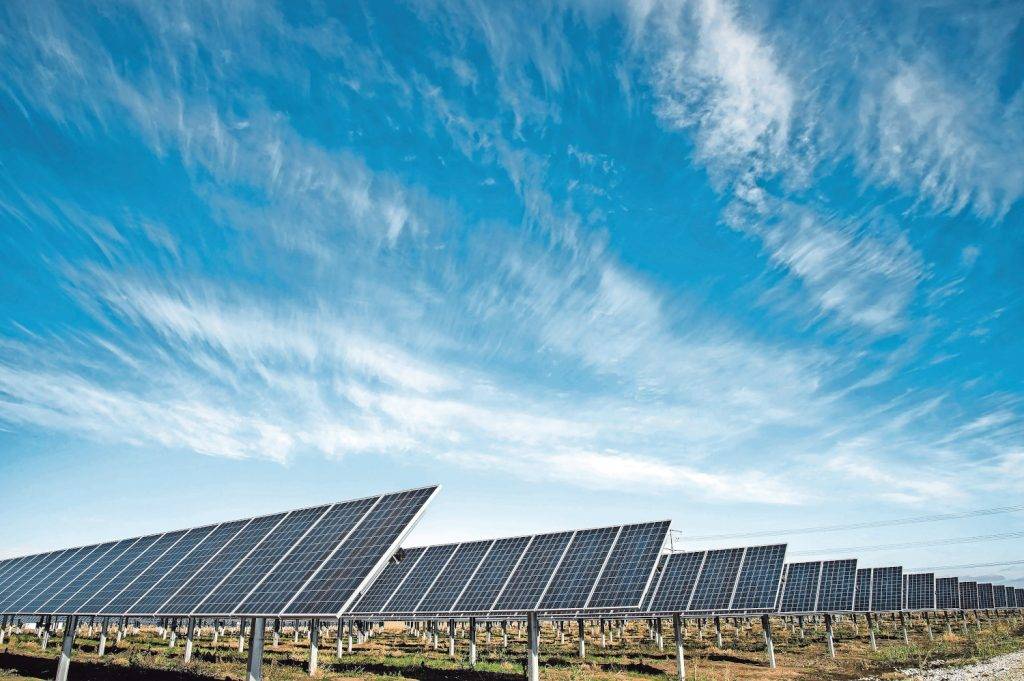Minister of Mineral Resources and Energy Gwede Mantashe
At the recent Africa Energy Indaba Conference a group of protestors held up placards, with some suggesting that Minister of Mineral Resources and Energy Gwede Mantashe is blocking renewables, which is a lie. Under the leadership of Minister Mantashe, the department has moved swiftly towards the full implementation of the Integrated Resource Plan (IRP) 2019 with the procurement of additional energy capacity through, among others, the renewable energy procurement programmes overseen by the Independent Power Producers Office.
In line with the IRP 2019, the Department of Mineral Resources and Energy (DMRE) is at the forefront of the implementation of a diversified energy mix that will reduce reliance on a single or a few primary energy sources.
In October 2021, Minister Mantashe announced 25 preferred bidder projects, procuring a total of 2 583 megawatts under Bid Window 5 of the Renewable Energy Independent Power Producer Procurement Programme (REIPPPP). At least 19 of these projects have signed the Power Purchasing Agreements (PPA) with Eskom.
Under Bid Window 6, the Department procured 4 200 megawatts (MW) of which 1 000 MW have been contracted; 3 200 MW could not be contracted due to grid transmission constraints. We believe the appointment of the Minister of Electricity will help fast-track efforts at Eskom to make the necessary investments in grid transmission, particularly in provinces such as the Northern Cape, Western Cape and Eastern Cape.
Some of these projects are currently at different stages of construction, and some are expected to reach commercial and financial close before the end of March 2023.

Since 2019, the DMRE, through the Independent Power Producers Office, has procured a total of 3 584 MW new renewable energy capacity under REIPPPP Bid Windows 5 and 6.
Once projects have reached financial close, the construction timeline is generally 24 months, and the new generation capacity is expected to be online by the end of 2024 and during 2025. Although this might appear to be a lengthy timeline, the fact that many projects are moving towards financial close or already under construction indicates good progress.
Recently the DMRE published a Request for Proposal (RFP) for the procurement of up to 513 MW of battery energy storage. This will contribute towards socioeconomic and environmentally sustainable growth, thus continuing the successes of the IPP Procurement Programme.
The Department is on course to release an (RFP) consisting of 3 000 MW of gas-to-power by the end of the current financial year, and Bid Window 7 of up to 5 000 MW, subject to grid capacity availability.
Minister Mantashe approved the gazetting of amendments to Schedule 2 of the Electricity Regulation Act, which enabled private generation of energy by removing the licensing threshold. This move has seen mining companies such as Gold Fields reporting a 10% increase in production, when mining production had taken a dip due in part to load-shedding.
The intervention to reform the electricity regulation regime has been hailed as a positive step by the energy sector and industry across the board. It is envisaged that this step will unlock significant investment in new generation capacity in the short-to-medium term, and make significant inroads towards achieving national energy security, as well as reducing the impact of load-shedding across the country.
In 2022, the National Energy Regulator of South Africa (NERSA) approved the registration of 406 embedded generators out of the 509 applications received. The total capacity of the registered generators is 1 664 MW. Among these generators, Seriti has begun the processes of constructing a 155 MW wind project in Mpumalanga, whilst Exxaro will construct a 70 MW Solar PV plant to supply electricity to their Grootegeluk mine. The Department hopes that more mining companies and those in other sectors will follow suit.

The IPP projects will not only add much-needed electricity generation capacity, but also make a substantial contribution to the country’s economy
In his opening remarks during the Africa Energy Indaba Minister Mantashe stressed that Africa is endowed with resources such as coal, oil and gas, which are needed for baseload energy to power our industrialisation. “Our continent deserves the opportunity to develop its own oil and gas infrastructure storage, refinery, and distribution to cushion its people against the turbulence of global markets and thereby secure its continental energy needs,” said the Minister.
The Department believes nuclear will play an essential role in the carbon mitigation strategies, and as a clean energy source to be deployed as part of the effort towards net-zero emissions. South Africa has demonstrated the safe operational experience of the Koeberg Nuclear Power Plant for over 38 years, and in this period Koeberg has provided clean energy in support of the country’s climate change goals. The Plant is reaching the end of its design life in 2024, but Eskom has commenced a plant life extension for Koeberg to increase its operational life by 20 years.
In its pursuit of a sustainable Just Energy Transition from a high to low carbon economic growth trajectory, the Department has partnered with the World Bank to explore the feasibility of carbon capture, utilisation and sequestration (CCUS).
The Department’s approach is that of moving from high to low carbon emissions as integral to a Just Energy Transition. In this instance, the Department has put a high premium on sustainable development across the spectrum of profitability, job security and community development around the mining and energy industry complex.
Notwithstanding the Department’s commitment to increase renewable energy sources by 18% and reduce coal energy generation by 15%, it is crucial to indicate that our primary focus is on ensuring that South Africa has a reliable, sustainable, and secure energy supply. It is for this reason that South Africa should employ all viable and available technologies, as envisaged in the IRP 2019, which will help achieve not only baseload, but also a stable national grid.